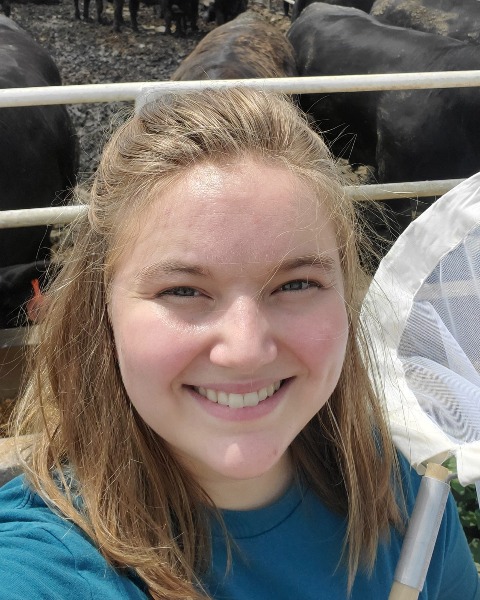Member Symposium
Blood Feeders: A New Frontier for Electropenetrography
Hungry, hungry, mosquitoes! The potentials of electropenetrography to evaluate feeding behaviors of Aedes aegypti on different hosts
Sunday, November 5, 2023
2:10 PM - 2:25 PM ET
Location: Gaylord National Resort & Convention Center, National Harbor 13

Victoria Pickens
Graduate Research Assistant
Kansas State University
Manhattan, Kansas- AW
Astri Wayadande (she/her/hers)
Professor
Oklahoma State University
Stillwater, Oklahoma
Presenting Author(s)
Co-author(s)
In addition to their irritative bites, mosquitoes are a significant pest capable of transmitting pathogens of public and animal health importance around the globe. Research has found that host characteristics like body odors from skin microbiota influence the attractiveness of hosts to mosquitoes. But, depending on host availability, mosquitoes may still choose to feed on a less attractive host. Understanding the interactions between a mosquito and their host while feeding is highly important, as differing host immune systems can influence the mosquito’s feeding behavior and, consequently, vector capacity. However, there is still a knowledge gap regarding the stages of mosquito blood-feeding behavior once on a host and how different hosts may impact these feeding stages. Electropenetrography (EPG), historically used to evaluate the probing behavior, plant host acceptance activities, and pathogen transmission in plant-feeding insects, has more recently been incorporated into the world of blood-feeding arthropods as well. In this presentation, we will evaluate the potential EPG offers in describing and measuring the feeding activities of the yellow fever mosquito, Aedes aegypti, as well as compare the EPG recordings gathered on different human hosts. These early recordings can potentially provide further insight on the two-way interactions between mosquitoes and their human hosts, as well as reveal possibilities for using EPG in future studies to investigate the influence of host immunity, pathogens, and control measures on mosquito feeding behaviors and vector capacity.

.png)
